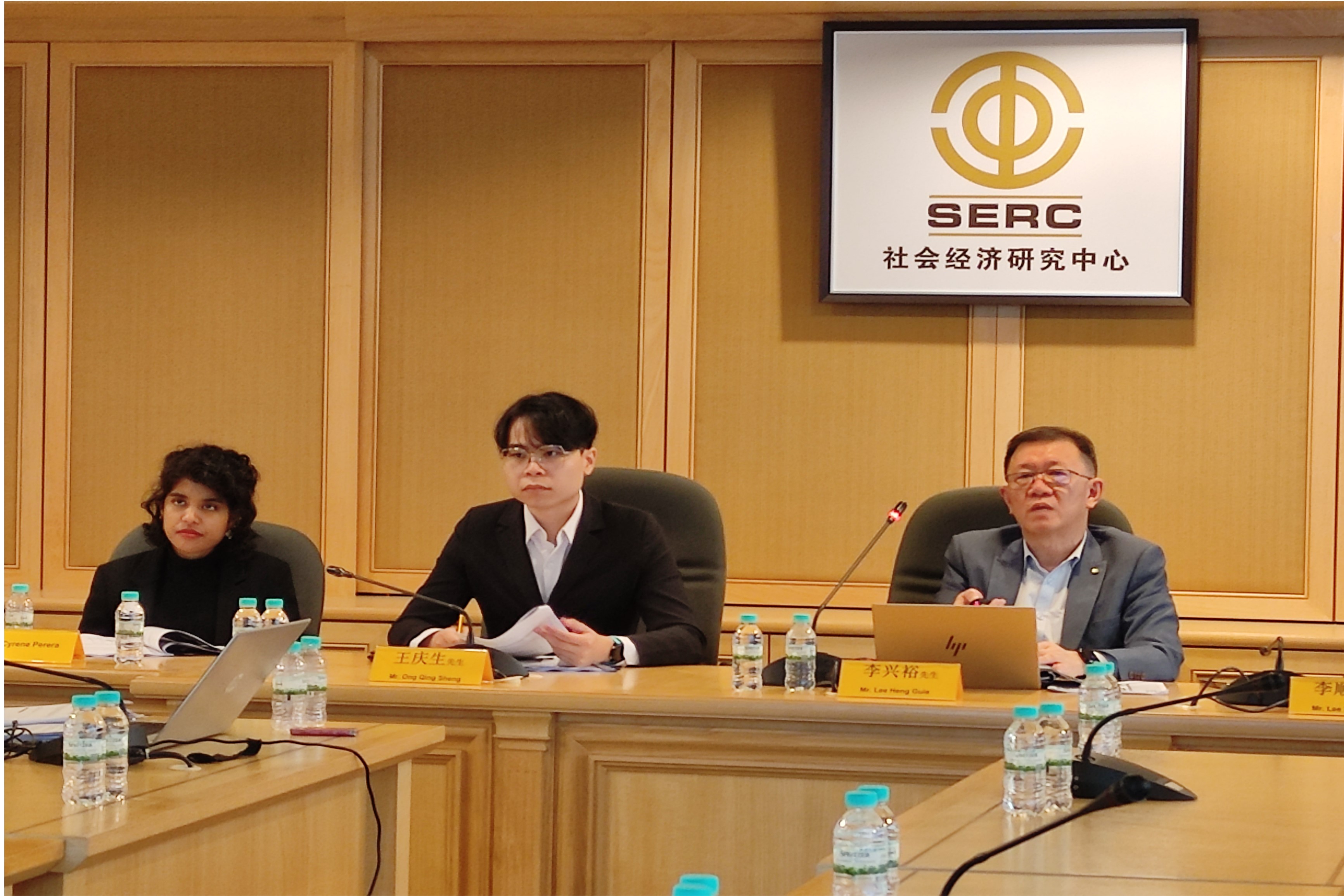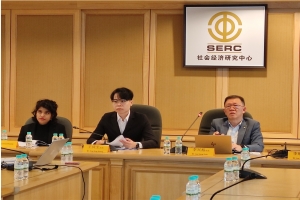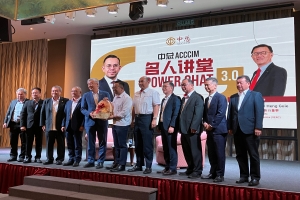Serc
Focus Malaysia
Published in
News
Tagged under
%30 %121 %2024
如何减轻石油危机冲击
Published in
Economic Digest
Tagged under
%23 %260 %2024
中国+1:大马的机遇与挑战
Published in
Economic Digest
Tagged under
%25 %259 %2024
How oil shocks can be less shocking
Published in
Economic Digest
Tagged under
SERC Media Briefing on Quarterly Economy Tracker (Jan-Mar 2024)

To view the Executive Summary of QET, please follow the link below:
2024Q1: Positive Signals Amid Downside Risks
Related news:
- 我国将“先甜后苦” 国际油价涨或冲击出口
中国报
- 中总2024年第一季度经济追踪报告 | 李兴裕:出口受二阶效应影响 油价上涨扩大贸易顺差
星洲日报
- 水费及排污费上涨 2月通胀率升1.8%
南洋商报
- 油价上涨成双刃剑 政府料不让油价自由浮动
东方日报
- (a) Malaysia still frontrunner for China+1 strategy despite rising competition from regional countries, says SERC
(b) SERC: Escalated oil price boon and bane for Malaysia
The Edge
- SERC has positive outlook on exports this year
How oil shocks can be less shocking
The Star
Published in
Activities
Tagged under
%23 %328 %2024
SERC: Escalated oil price boon and bane for Malaysia
The Edge
Published in
News
Tagged under
%23 %135 %2024
2024Q1: Positive Signals Amid Downside Risks
For news coverage, please proceed to Activity page.
https://www.acccimserc.com/activities/activity-20240423
A. WORLD ECONOMIC OUTLOOK UPDATE
GLOBAL GROWTH STILL GROWING AMID MULTIFACETED RISKS
- Global economy maintains momentum, albeit moderate in 2024. The global economy is expected to grow at a decent clip in 2024, supported by domestic demand and a gradual improvement in global trade activity. The International Monetary Fund (IMF) raised its forecast for global growth to 3.2% (from 3.1% and 2.9% previously) in 2024, though it is still below the average global GDP growth of 3.8% pa in 2000-2019.
- With global headline and core inflation readings falling though remain a distance from major central banks’ inflation target, the rate cut is on the horizon going forward. The central banks are waiting for more confirmation of price data before cutting interest rates. The central banks officials want to “feel more confident” that inflation is heading towards the central bank’s target
- Risks remain skewed to the downside. The global growth outlook remains subject to downside risks, mainly from an escalation of geopolitical conflicts in Ukraine and the Middle East, higher-than-anticipated inflation outturns, the US Presidential election and volatility in global commodity and financial markets.
B. MALAYSIA ECONOMIC OUTLOOK UPDATE
POSITIVE SIGNALS AMID DOWNSIDE RISKS
- The Malaysian economy started the year 2024 in a positive direction, albeit a mixed performance. The Department of Statistics Malaysia (DOSM)’s advance estimates indicated that real GDP increased by 3.9% yoy in Q1 2024 (3.0% in Q4 2023), supported by the services and construction sectors and a turnaround in the manufacturing sector. The growth outlook remains subject to downside risks.
- Global leading and forward indicators suggest continued global growth, albeit still moderate. The International Monetary Fund raised its forecast for global growth to 3.2% (from 3.1% and 2.9% previously) in 2024. However, it is still below the average global GDP growth of 3.8% pa in 2000-2019. Some central banks have begun to lower interest rates as global inflation has fallen.
- Our tracking of high-frequency indicators provides a good head start for the year, albeit a weak reading in February, partly due to seasonal festive effects. But, we must keep vigilant about both external and domestic risks, which are roughly balanced. External risks may come from weaker-than-expected external demand, larger declines in commodity production and the escalation of geopolitical conflicts, especially in the Middle East. Meanwhile, domestic risks to growth could come from weaker domestic consumption and slower implementation of existing and new projects.
Published in
Quarterly Economy Tracker
Tagged under
%19 %302 %2024
ACCCIM Power Chat 3.0
ACCCIM Power Chat 3.0
The seminar was organised by the Associated Chinese Chambers of Commerce and Industry of Malaysia (ACCCIM), and moderated by Mr. Lee Heng Guie.


Published in
Activities
Tagged under
%13 %304 %2024
China Plus One: Nine opportunities yet challenges for Malaysia to derive maximum benefits
Published in
Economic Digest
Tagged under







